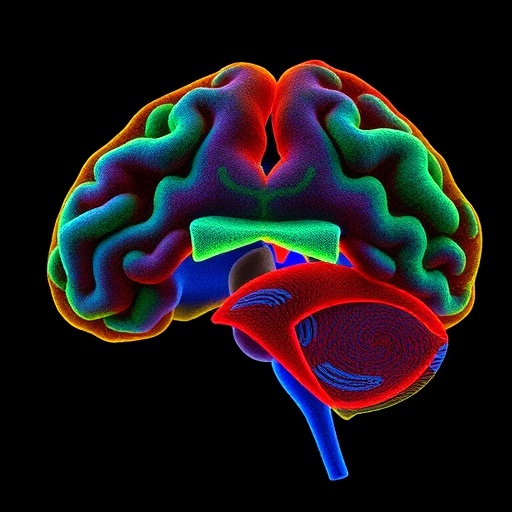
In a groundbreaking new study published in the prestigious journal Biological Psychiatry, researchers have uncovered subtle yet critical cardiac abnormalities in young adults diagnosed with bipolar disorder, shedding light on the early mechanisms that may predispose this vulnerable population to develop cardiovascular disease and eventual heart failure. This pathbreaking research delves into the nuanced interplay between mental health disorders and cardiovascular function, revealing how alterations in heart muscle mechanics can be identified well before clinical symptoms manifest, potentially revolutionizing therapeutic strategies aimed at prevention rather than treatment.
Cardiovascular disease is long recognized as the leading cause of premature mortality in individuals living with bipolar disorder—a complex psychiatric condition marked by dramatic mood swings ranging from manic highs to depressive lows. While the heightened cardiovascular risk in this population is documented, the underlying cardiac dysfunctions that contribute to this risk have remained elusive, particularly during the early stages before overt cardiac failure occurs. The new study addresses this critical knowledge gap by employing advanced cardiac imaging techniques to detect subclinical, or asymptomatic, changes in myocardial function.
Specifically, researchers examined a cohort of young adults aged 20 to 45 diagnosed with bipolar disorder, utilizing state-of-the-art echocardiographic methods that go beyond traditional measures of heart function such as ejection fraction. Two innovative parameters formed the cornerstone of the study: peak systolic strain and myocardial work. Peak systolic strain measures the deformation of the heart muscle fibers during contraction, offering a sensitive indicator of myocardial contractility. Myocardial work quantifies the energy expenditure of the heart muscle during contraction, integrating pressure and strain measurements to reflect cardiac efficiency.
.adsslot_JLGXWl4CeT{width:728px !important;height:90px !important;}
@media(max-width:1199px){ .adsslot_JLGXWl4CeT{width:468px !important;height:60px !important;}
}
@media(max-width:767px){ .adsslot_JLGXWl4CeT{width:320px !important;height:50px !important;}
}
ADVERTISEMENT
By examining these parameters, the study uncovered subtle impairments in myocardial deformation and work efficiency in bipolar patients relative to healthy controls. These deficits were not detectable via conventional cardiac assessments, highlighting the sensitivity and clinical relevance of these newer imaging biomarkers. Importantly, these early abnormalities may signify the initiation of myocardial remodeling processes that precede symptomatic heart failure by years, offering a crucial window for intervention.
The mechanisms by which bipolar disorder intersects with cardiac pathology are multifaceted and likely involve a complex interplay of neurohormonal, inflammatory, and metabolic factors. Chronic systemic inflammation, autonomic nervous system dysregulation, and the metabolic side effects of psychotropic medications are thought to contribute to myocardial injury and dysfunction. Identifying early cardiac impairment in bipolar disorder patients underscores the need to consider cardiovascular monitoring an integral part of psychiatric care, even in young adults with ostensibly “healthy” hearts.
This study’s implications extend beyond diagnostics, opening promising avenues for therapies targeted at preserving myocardial function before irreversible damage occurs. Interventions aimed at modulating myocardial workload or improving contractility could be tailored to this at-risk demographic, potentially averting progression to overt heart failure. Furthermore, the identification of novel biomarkers like peak systolic strain and myocardial work could guide personalized treatment strategies, optimizing cardiovascular outcomes while addressing psychiatric symptoms.
The study’s multidisciplinary approach—bridging cardiology with psychiatry—reflects an emerging paradigm recognizing the bidirectional relationship between mental health and cardiovascular wellness. Traditionally compartmentalized, these fields are now converging to tackle the broader concept of psychocardiology, emphasizing integrated care models that address both mind and heart. Early detection of cardiac dysfunction in bipolar disorder exemplifies the potential of this synergy to transform patient outcomes.
Moreover, the study’s focus on young adults is particularly compelling, as it challenges the notion that cardiovascular disease is primarily a concern of older populations. By demonstrating that myocardial abnormalities exist at subclinical levels decades before typical heart failure presentations, the findings urge a proactive stance on cardiovascular health monitoring among younger psychiatric cohorts. This preventative perspective aligns with contemporary shifts toward preemptive medicine, where the goal is early intervention rather than reactive treatment.
Methodologically, the use of advanced echocardiographic strain analysis represents a significant advancement over standard imaging techniques. Strain imaging provides a quantitative and reproducible measure of myocardial mechanics, unmatched in its sensitivity to early myocardial impairment. Myocardial work, integrating pressure-strain loops, adds a functional dimension that approximates the workload of heart muscle fibers, offering insights that may better reflect disease burden in complex disorders like bipolar disease.
The novel application of these tools in a psychiatric population also raises intriguing questions about the pathophysiological interconnections between mood disorders and cardiac function. For example, increased sympathetic nervous activity during manic episodes may accelerate myocardial energy demands, leading to subclinical dysfunction. Similarly, depressive states accompanied by altered autonomic balance might contribute to impaired myocardial relaxation and contraction dynamics. These insights provide fertile ground for future research exploring the dynamic cardiac effects of mood fluctuations.
As cardiovascular disease continues to claim lives prematurely in patients with bipolar disorder, this discovery underscores the urgency of integrated screening programs in psychiatric settings. Incorporating cardiac imaging biomarkers into routine psychiatric evaluations could identify at-risk individuals early, enabling timely lifestyle interventions and medical therapies focused on cardiovascular preservation. This proactive approach holds promise for reducing the staggering morbidity and mortality burden in bipolar disorder populations worldwide.
In sum, this pioneering research published by Elsevier in Biological Psychiatry offers a paradigm shift in understanding cardiovascular risk in bipolar disorder. By leveraging cutting-edge cardiac imaging to reveal hidden myocardial impairments in young adults, it points toward innovative strategies for early detection, risk stratification, and preemptive therapeutic intervention. As the field moves toward precision medicine, these findings illuminate a critical pathway to merging mental health and cardiology for holistic patient care and improved long-term outcomes.
Subject of Research: Early detection of subclinical myocardial dysfunction in young adults with bipolar disorder using advanced cardiac imaging techniques.
Article Title: [Not Provided]
News Publication Date: [Not Provided]
Web References: [Not Provided]
References: Biological Psychiatry, Elsevier.
Image Credits: [Not Provided]
Keywords: bipolar disorder, cardiovascular disease, heart failure, subclinical myocardial dysfunction, peak systolic strain, myocardial work, echocardiography, psychocardiology, early detection, young adults, cardiac imaging biomarkers.
Tags: advanced cardiac imaging techniquesbipolar disorder and heart healthcardiovascular risks in mental healthearly heart dysfunction in bipolar disordergroundbreaking research in cardiac healthmyocardial function in psychiatric patientsprevention of cardiovascular disease in bipolar disorderpsychological factors influencing cardiovascular functionrelationship between mood disorders and heart diseasesubclinical cardiac abnormalitiestherapeutic strategies for bipolar disorder patientsyoung adults with bipolar disorder





